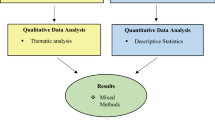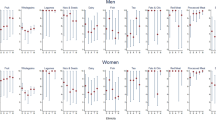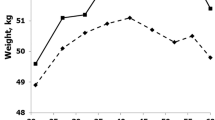Abstract
OBJECTIVES: The aim of this study was to compare perceptions of body size in European, Maori and Pacific Islands people with measured body mass index (BMI), waist-to-hip ratio and change in BMI since age 21 y. Socio-demographic factors that influenced perceptions of body size were also investigated.
DESIGN: Cross-sectional survey.
METHODS: Participants were 5554 workers, aged ≥40 y, recruited from companies in New Zealand during 1988–1990.
RESULTS: Prevalences of BMI>25 kg/m2 were: Europeans, 64.7% men, 47.2% women; Maori, 93.2% men, 80.6% women; and Pacific Islanders, 94.1% men, 92.9% women. Similarly, prevalences of BMI > 30 kg/m2 were: Europeans, 14.4% men, 14.6% women; Maori, 55.0% men, 41.9% women; and Pacific Islanders, 55.1% men, 71.7% women. At each perception of body size category, Maori and Pacific Islands men and women had a higher BMI than European men and women, respectively. BMI increased with increasing perception of body size in all gender and ethnic groups. Since age 21, increases in BMI were highest in Pacific Islands people and increased with increasing perceptions of body size category in all ethnic and gender groups. BMI adjusted odds (95% CI) of being in a lower perception category for body size were 1.70 (1.38–2.12) in Maori and 8.99 (7.30–11.09) in Pacific people compared to Europeans, 1.27 (1.13–1.42) times higher for people with no tertiary education, 1.41 (1.25–1.59) times higher in people with low socioeconomic status, and 0.94 (0.92– 0.95) for change in BMI since age 21.
CONCLUSION: Nutritional programs aimed at reducing levels of obesity should be ethnic-specific, addressing food and health in the context of their culture, and also take into account the socioeconomic status of the group. On the population level, obesity reduction programs may be more beneficial if they are aimed at the maintenance of weight at age 21.
This is a preview of subscription content, access via your institution
Access options
Subscribe to this journal
Receive 12 print issues and online access
$259.00 per year
only $21.58 per issue
Buy this article
- Purchase on Springer Link
- Instant access to full article PDF
Prices may be subject to local taxes which are calculated during checkout



Similar content being viewed by others
References
Manson JL, Stampfer MJ, Hennekens CH, Willett WC . Body weight and longevity: a reassessment JAMA 1987 257:: 353–358.
NHIS findings . Nutrition knowledge and baseline data for the weight-loss objectives Public Health Reports January–February 1982.
Rimm EB, Stampfer M, Giovannucci E, Ascherio A, Spiegelman D, Colditz GA, Willet WC . Body size and fat distribution as predictors of coronary heart disease among middle-aged and older US men Am J Epidemiol 1995 141: 1117–1127.
Larsson B . Obesity, fat distribution and cardiovascular disease Int J Obesity 1991 15: 53–57.
Despres JP, Moorjani S, Lupien PJ, Tremblay A, Nadeau A, Bouchard C . Regional distribution of body fat, plasma lipoproteins, and cardiovascular disease Arteriosclerosis 1990 10: 497–511.
Stamler R, Stamler J, Riedlinger WF, Algera G, Roberts RH . Weight and blood pressure: findings in hypertension screening of one million Americans JAMA 1978 240: 1607–1610.
Kannel WB, Brand N, Skinner JJJ, Dawber TR, McNamara PM . The relations of adiposity to blood pressure and development of hypertension Ann Intern Med 1967 67: 48–59.
Chan JM, Rimm EB, Colditz GA, Stampfer MJ, Willett WC . Obesity, fat distribution, and weight gain as risk factors for clinical diabetes Diabetes Care 1994 17: 961–969.
Zimmet P, Dowse G, Finch C, Sergeantson S, King H . The epidemiology and natural history of NIDDM — lessons from the South Pacific Diabetes Metab Rev 1990 6:: 91–124.
Hartz AJ, Rupley DC Jr, Kalkhoff RD, Rimm AA . Relationship of obesity to diabetes: influence of obesity and body fat distribution Prev Med 1983 12: 351–357.
Nichter M, Nichter M . Hype and weight Medical Anthropol 1991 13: 249–84.
Furnham A, Alibhai N . Cross-cultural differences in the perception of female body shapes Psychol Med 1983 13: 829–837.
Barrow T . Women of Polynesia Seven Seas: Wellington 1967.
van Dijk N . The Hansel and Gretel syndrome: a critique of Houghton's cold adaptation hypothesis and an alternative model NZ J Archaeol 1991 13: 65–89.
Pollock N . Cultural elaborations of obesity—fattening practices in Pacific Societies Asian Pacific J Clin Nutr 1995 14: 357–360.
Wing R, Adams-Campbell L, Marcus M, Janney C . Effect of ethnicity and geographic location on body weight, dietary restraint and abnormal eating attitudes Obes Res 1993 1: 35–41.
Woo J, Leung S, Ho S, Sham A, Lam T, Janus E . Influence of educational level and marital status on dietary intake, obesity and other cardiovascular risk factors in a Hong Kong Chinese population Eur J Clin Nutr 1999 53: 461–467.
Cairney J, Wade T . Correlates of body weight in the 1994 National Population Health Survey In J Obes 1998 22: 584–591.
Sundquist J, Johansson S . The influence of socioeconomic status, ethnicity and lifestyle on body mass index in a longitudinal study Int J Epidemiol 1998 27: 57–63.
Rahkonen O, Lundberg O, Lahelma E, Huuhka M . Body mass and social class: a comparison of Finland and Sweden in the 1990s J Public Health Policy 1998 19: 88–105.
Department of Statistics . New Zealand standard industrial classification of occupations Department of Statistics; Wellington 1987.
Elley W, Irving J . The Elley–Irving Socio-economic Index 1981 Census Revision NZ Educ Stud 1985 20: 115–128.
SAS Institute Inc . SAS/STAT user's guide, version 6, 4th ed SAS Institute Inc.: Cary, NC 1989.
Statistical Sciences . S-PLUS user's manual, version 3.2 StatSci, a division of Mathsoft Inc: Seattle, WA 1993.
Brewis AB, McGarvey ST, Jones J, Swinburn BA . Perceptions of body size in Pacific Islanders Int J Obes 1998 22:: 185–189.
Craig PL, Swinburn BA, Matenga-Smith T, Matangi H, Vaughan G . Do Polynesians still believe that big is beautiful? Comparison of body size perceptions and preferences of Cook Islands Maori and Australians NZ Med J 1996 109: 200–203.
Garner DM, Garfinkel PE, Schwartz D, Thompson M . Cultural expectations of thinness in women Psychol Rep 1980 47: 483–491.
Pomare E . Maori standards of health—a study of the 20 year period 1955–75 Medical Research Council of New Zealand, December 1980.
Bathgate M, Alexander D, Mitikulena A, Borman B, Roberts A, Grigg M . The Health of Pacific Islands People in New Zealand. Public Health Commission; Wellington 1994 pp 107–111.
Gifford I, Calder L . The Central Auckland Health status review 1989.
South Pacific Commission . The 1986 National Nutrition Survey of the Kingdom of Tonga: South Pacific Commission: Noumea, New Caledonia 1992.
Swinburn BA, Craig PL, Prijatmoko D, Strauss B . Body mass index in Polynesians: are current definitions for obesity appropriate? Int J Obes 1996 20: 889–894.
Rush E, Plank L, Robinson S . Resting metabolic rate in young Polynesian and Caucasian women Int J Obes 1997 21: 1071–1075.
Rush E, Plank L, Coward W . Energy expenditure of young Polynesian and European women in New Zealand and relations to body composition Am J Clin Nutr 1999 69: 43–48.
Rush E, Plank L, Laulu M, Robinson S . Prediction of percentage body fat from anthropometric measurements: comparison of New Zealand European and Polynesian young women Am J Clin Nutr 1997 66: 2–7.
Acknowledgements
Major funding was provided by the New Zealand Medical Research Council and the Medical Research Council Diabetes Task Force. Supplementary funds were received from the National Kidney Foundation of New Zealand and Lotteries Medical Research. Dr P Metcalf and this study were funded by the Health Research Council of New Zealand.
Author information
Authors and Affiliations
Corresponding author
Rights and permissions
About this article
Cite this article
Metcalf, P., Scragg, R., Willoughby, P. et al. Ethnic differences in perceptions of body size in middle-aged European, Maori and Pacific People living in New Zealand. Int J Obes 24, 593–599 (2000). https://doi.org/10.1038/sj.ijo.0801202
Received:
Revised:
Accepted:
Published:
Issue Date:
DOI: https://doi.org/10.1038/sj.ijo.0801202
Keywords
This article is cited by
-
Relationship between vitamin D, iron, and hepcidin in premenopausal females, potentially confounded by ethnicity
European Journal of Nutrition (2023)
-
Prenatal Stress and Early Childhood Body Mass Index: A Path Analysis Approach
Maternal and Child Health Journal (2021)
-
Socio-cultural norms of body size in Westerners and Polynesians affect heart rate variability and emotion during social interactions
Culture and Brain (2019)
-
Misperception of weight status in the pacific: preliminary findings in rural and urban 11- to 16-year-olds of New Caledonia
BMC Public Health (2017)
-
Obesity Among Young Adults in Developing Countries: A Systematic Overview
Current Obesity Reports (2016)



